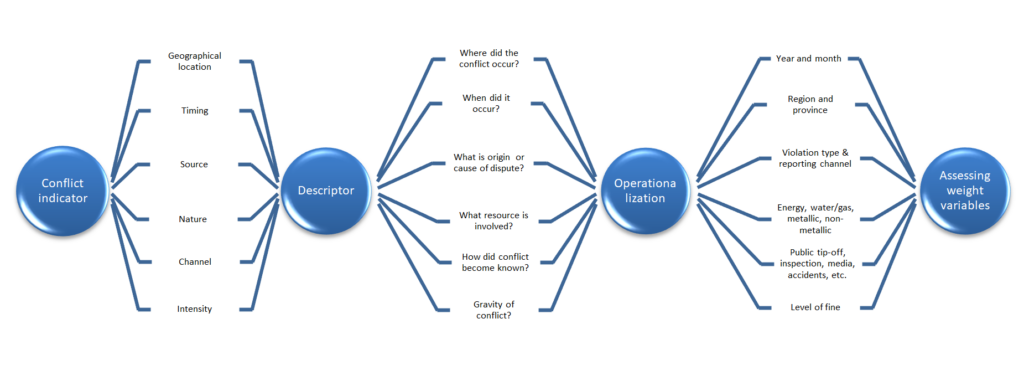Titling programs are introduced to create a stable and secure institutional environment that effectively resolves land conflicts. However, the process of land registration may also exacerbate latent conflicts or trigger new contestation, causing the opposite of what was intended – a largely conflict-ridden and non-credible tenure arrangement
(Krul et al., 2021)
Why do credible institutions continuously generate conflict, while apparently stable governments can suddenly be toppled by contestation appearing out of thin air? To solve this paradox, the understanding of credibility cannot solely rely on studying the frequency of conflict. This realization spurred the design of a holistic tool that accounts for the complexity of conflict: the Conflict Analysis Model or CAM.
The origins of CAM can be traced back to the study of resource conflict (Ho, 2005, 2006), and was developed to include different variables (Ho, 2014), including timing, source, nature, frequency, intensity, duration, and outcome. After field-testing, the CAM was expanded (Ho and Zhao, 2022; Yang and Ho, 2019).
Similar to the FAT Framework, the Conflict Analysis Model is a heuristic tool to which qualitative and quantitative indicators can be added, adjusted, and operationalized according to contexts and needs. It is a flexible instrument to assess variables at play rather than a rigid model in which each indicator must be present (see figure, click to enlarge)

Aim: CAM aims to approach conflict in a multi-dimensional, temporally, and spatially sensitive manner by going through a reiterative process of hermeneutical data interpretation.
Assumption: CAM hypothesizes that the more and elevated indicators are involved in perceived conflict, the lower the credibility.
Approach: CAM is a versatile tool that can be used to collect data in a qualitative manner (e.g. through interviews, participant observation or focus groups), as well as in a quantitative way (i.e. surveys, statistical figures, big data).
Application: CAM has been applied and field-tested in a wide range of studies, such as on rural tenancy (You et al., 2022), urban commons (Arvanitidis and Papagiannitsis, 2020), nature conservation and Payment for Ecological Services (Fan et al., 2019; 2022), Land Value Capture (Perez-Moreno, 2024), and forest disputes (Krul et al., 2021). Geographically, these studies encompass Asia, Latin America and Europe.